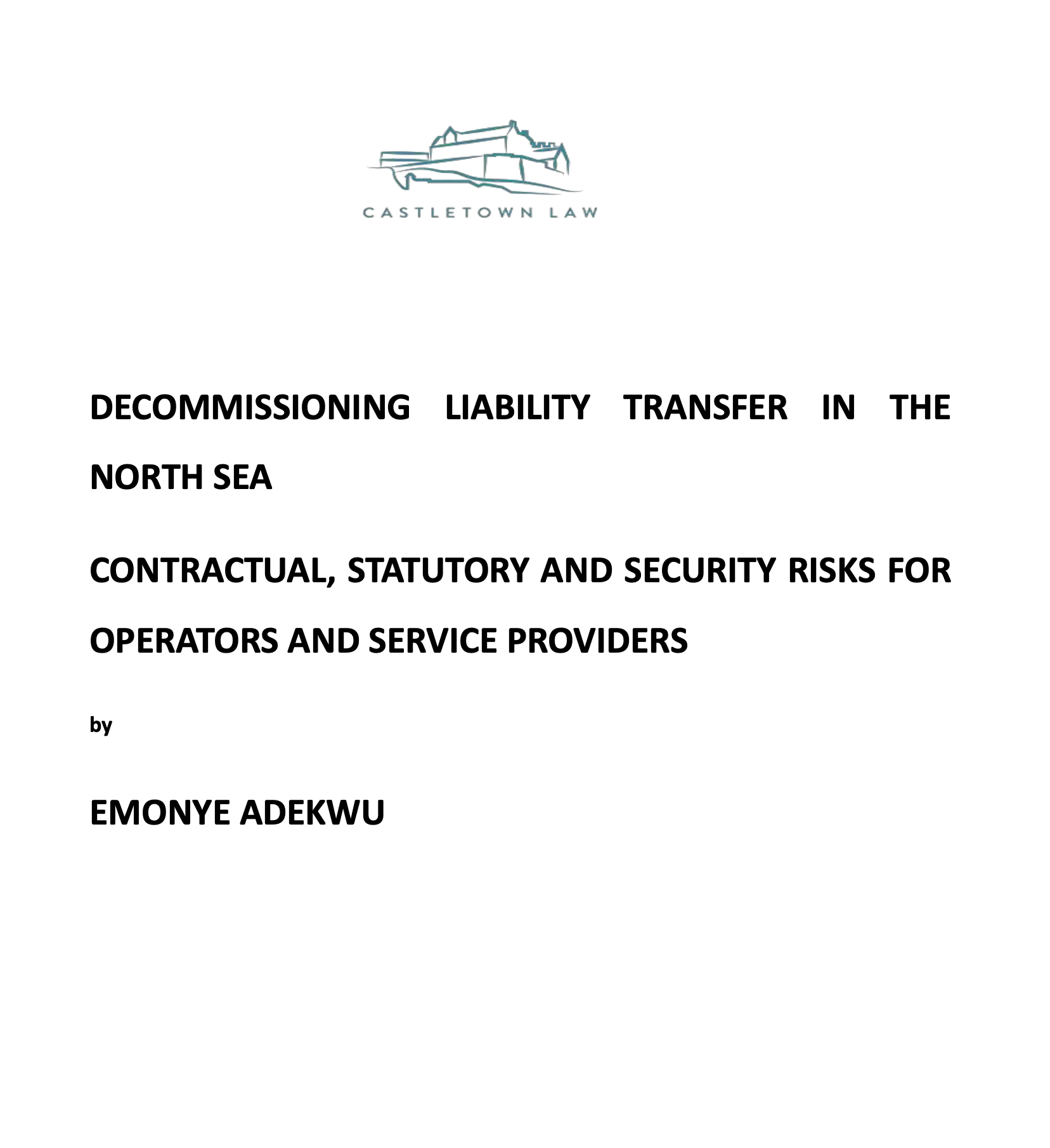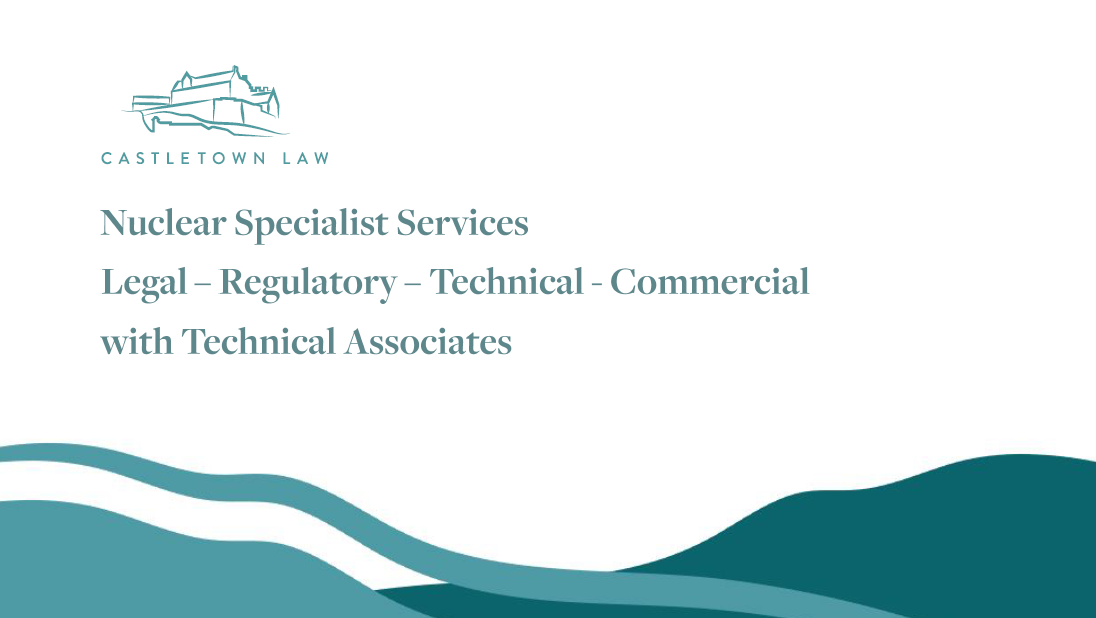Challenges for Advanced Nuclear Technologies (May 2024)
Challenges for Advanced Nuclear Technologies
This short article considers some of the hurdles that advanced nuclear technologies face from a regulatory point of view.
There is an absence of recognition that the current regulatory approval processes were not designed for advanced nuclear technologies (ANTs) and manufacturing capabilities. That is perhaps starting to change, albeit slowly, as we witness a rethinking of processes to fit the current and future technology available, by adapting current regulatory approaches and standards.
If we take the generic design assessment (GDA) process in the UK, that regulatory process is targeted at gaining regulator confidence in turn to build investor confidence.
The Office for Nuclear Regulation (ONR) recognised in 2020 that it needed to refine and streamline its existing GDA process which it introduced with the statement: “This has introduced new flexibilities into the GDA process that can enable assessment of innovative Advanced Nuclear Technologies.”
More recently we have seen the introduction of the ONR`s early Regulatory Engagement process which looks promising, and we can also consider the use of the existing ONR “Innovation Pathways”, where such steps could helpfully support earlier engagement with the regulator and feed into the GDA or Licensing applications if developers seek either route.
The hope is that these types of initiatives mean that collaborative working can result in a process suited to advanced nuclear technologies and the needs of the industry. The GDA process ought to be appropriate to the technology deployed.
In relation to the GDA, it is important to note that I am not advocating a move away from the UK`s goals-based approach, which conceptually I favour as it puts the onus on technology developers to demonstrate that their designs are safe and fit for purpose, without having to satisfy a prescriptive checklist. The issue is over the timescales and costs involved which for most ANTs, are now prohibitive. I am arguing for a proportionate and measured approach to regulation.
For Regulators, a more open-minded approach (that does not insist upon adherence to existing practices) is needed and an understanding that for example many current Safety Assessment Principles (SAPs), Security Assessment Principles (SyAPs) and Technical Assessment Guides (TAGs) were developed around existing designs and may not be applicable to innovative new designs. The ONR to fair to them performs reviews of their guidance and have also said that a focused review of their guidance on licensing is planned. This is now imperative.
On the other side, clearly vendors/operators should be confident that their designs are safe and consequently be prepared to argue their safety cases. In doing so, a range of approaches derived both from existing nuclear safety cases and innovation in other industries will need to be developed to persuade the regulator of the safety of their designs.
It’s worth pausing to take a look at the work in other mature nuclear jurisdictions. See for example the work of the US Nuclear Regulatory Commission (NRC) and its recently developed guidance documents to facilitate the licensing process for non-light water reactor designs. The guidance is anticipated to significantly reduce the regulatory uncertainty for new reactor concepts that don’t fit the mould of conventional reactor technologies.
The NRC have finalised 10 documents that will help streamline the licensing process for non-light-water reactor applicants. They include the endorsement of an industry-led project to deliver a more technology-inclusive review of the safety analysis report.
It’s also worth noting the work of the NRC on Environmental Impact Assessments for advanced nuclear reactors. On April 23, the NRC approved a proposed rule to streamline the National Environmental Policy Act review process for advanced nuclear reactors.
NRC staff estimates that the streamlined review process could reduce the costs of environmental reviews by 20-45%.
Back to the UK, I would suggest that this is an opportune moment to take a relook at the approach to ALARP.
Inline with the IAEA, the UK regulatory process requires that the risks posed by a nuclear plant are demonstrably “As Low As Reasonably Practicable”(“ALARP”), taking into account economic and safety requirements.
In the UK this concept originally derives from UK legislation, specifically the Health and Safety at Work etc. Act 1974,with the term being enshrined in UK case law since the 1949 case of Edwards v National Coal Board.
In that case, the appeal court ruled that the National Coal Board did not have to take every possible physical measure to eliminate risk – it only had to provide protection where it was required. The phrase used in the judgement was “reasonably practicable”, establishing the principle that a risk must be significant in relation to the “cost” (in terms of money, time or effort) required to avert it.
A good example of the application of ALARP in the nuclear industry is the requirement that workers’ exposure to ionising radiation is “as low as reasonably practicable”. But what happens once exposure levels fall significantly below safe limits? Given what we know about exposure to radiation for the general public on a daily basis is reducing radiation levels “as low as reasonably practicable” still a useful exercise?
But where this assessment is particularly troubling is in its application to designs. We have the situation where a design can be approved but then a new development arises where theoretically or indeed in practice the new approach could reduce the risk. Incorporating those elements at the start of a new project is understandable and makes sense but what about where a design has already been approved as being safe elsewhere?
A potential solution is to consider modifying ALARP. In my view there should be an emphasis on not having to reduce the risk to zero or even a negligible level but to accept a low risk and if a design has already been accepted then acknowledge that there is no need to reduce it any further. We are not looking to eliminate risk.
In relation to the current Development Consent Order process of nationally significant infostructure projects, we clearly need to see a more streamlined process and a reduction in intensive expert reliance, document volume and costs involved.
Amendments to the Levelling up and Regeneration Bill (i.e. giving the Secretary of State power to reduce the statutory timeframes for a DCO examination from the standard six months) is a step in the right direction.
Any new NPS (EN-6 or EN-7) should consider a streamlined process and tests and reduced policy requirements that could apply to SMRs and AMRs with a recognition that the emphasis on the need for net zero is of primary importance and indeed should be extended for application by all regulators.
In short, there is much work to be done on the regulatory processes and not much time to act if the UK is to see the benefits of advanced nuclear technologies.











